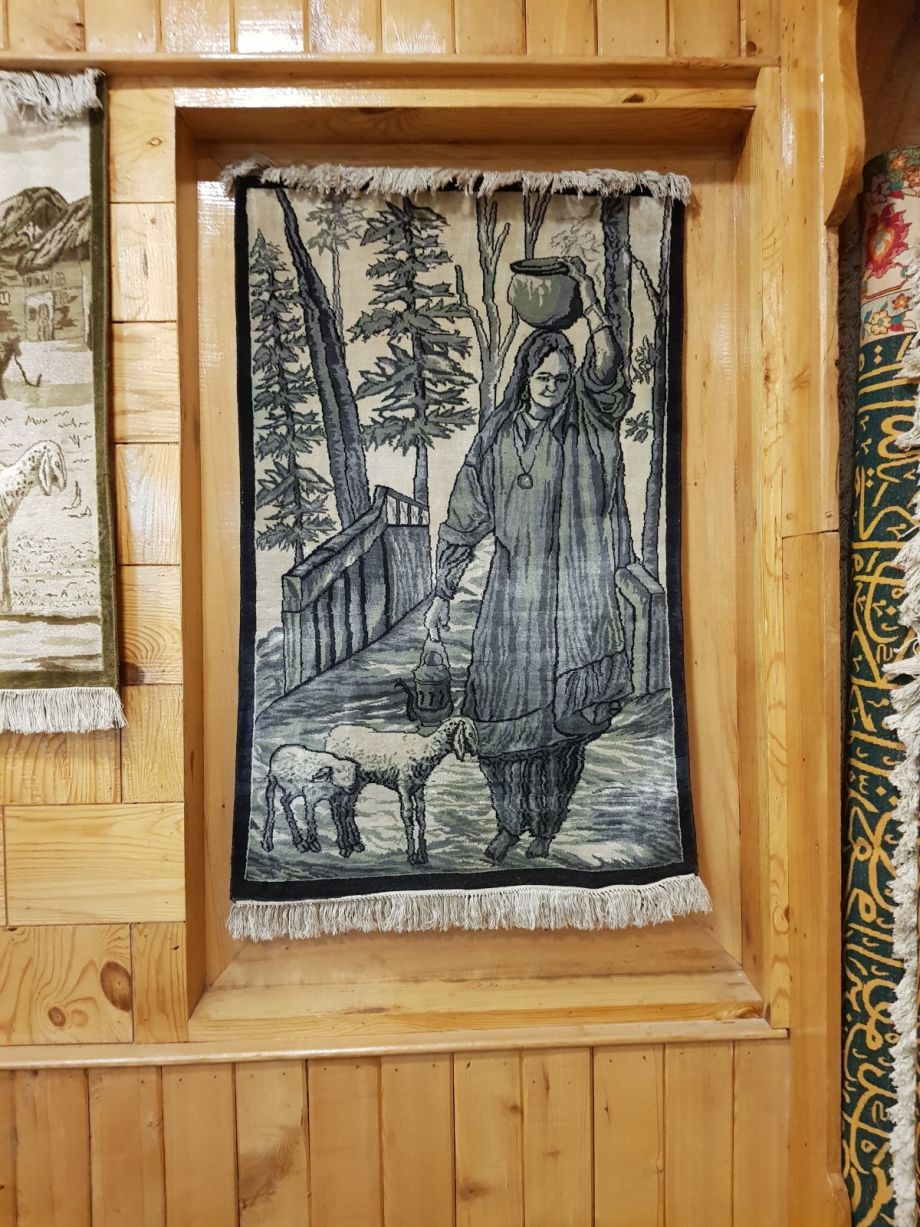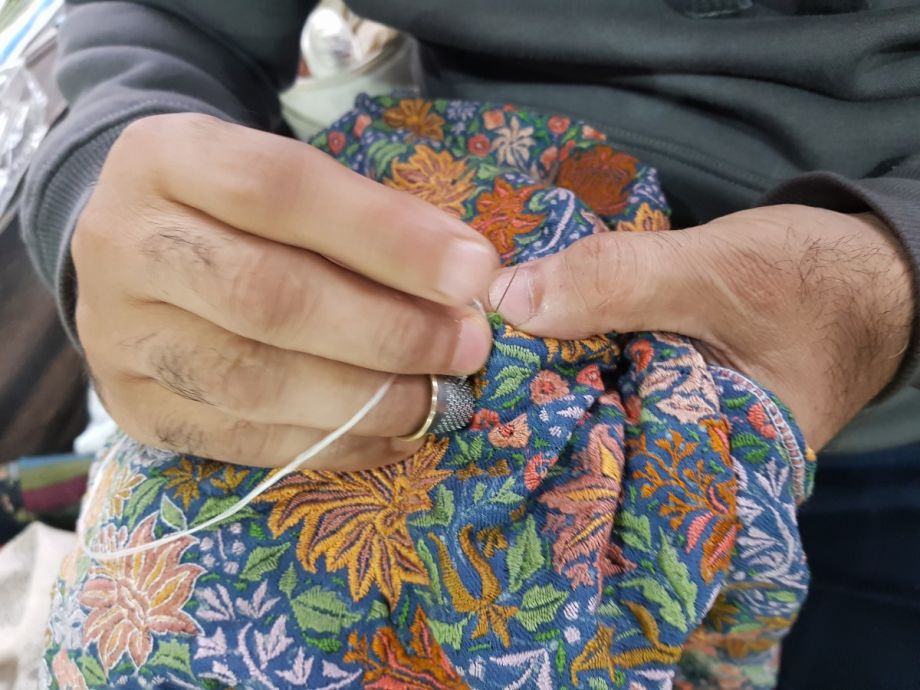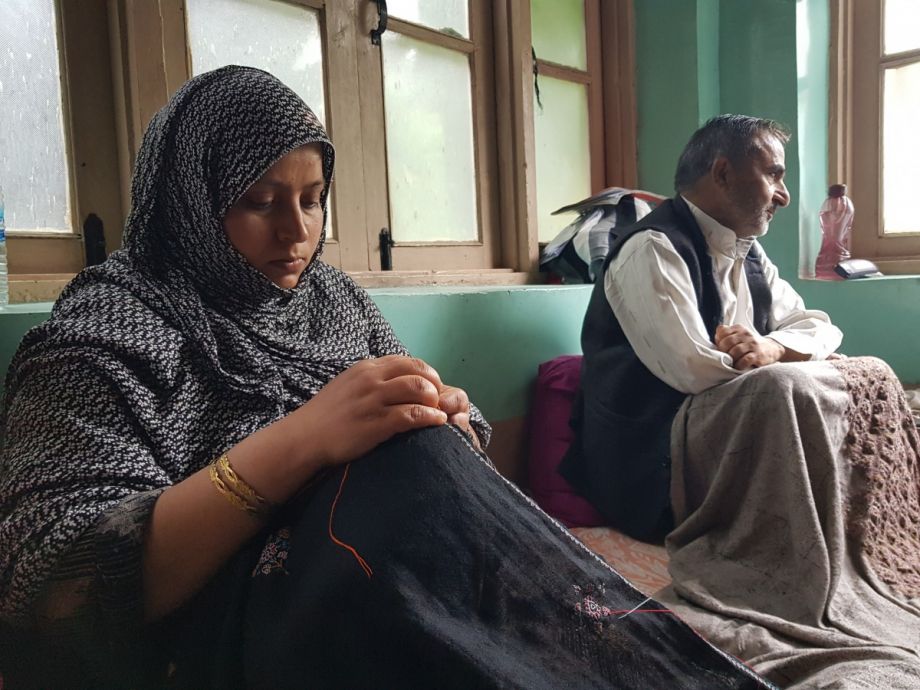Kashmir is known globally not only for its rugged natural beauty, but for its rich local traditions of unique traditional handicrafts and artwork, from papier-mâché to walnut wood carvings. But in a world when mass-produced manufactured goods have become the default, Kashmir’s tens of thousands of artisans are struggling to keep up.
To revive Kashmir’s famed but fading handicrafts, especially at a time when lockdowns have devastated sales, the Jammu and Kashmir government’s handicraft department has embarked on a “Craft Safari” initiative that many artisans in the region see as a ray of hope.
“If all goes well, Kashmir’s centuries-old handicrafts will once again thrive, giving the region’s culture and heritage a much-needed boost while also giving local artisans a fresh start,” says Tariq Ahmad Zargar, director of the Handicrafts and Handloom Kashmir division.
Last year, these local craft traditions helped the city of Srinagar secure a place in UNESCO’s Creative City Network, joining around 300 cities. Launched in 2004, the network’s purpose is to advance cooperation among members in working toward sustainable urban development. The designation, in the Crafts and Folk Art category, recognizes that Srinagar has placed its creative and cultural industries at the center of its strategy for this development.
Srinagar city’s strong artistic legacy and culture date back to the 14th century. Nearly 40,000 registered artisans work in fields from carpet weaving to copper wares, producing hand-made crafts in styles unique to the region. Over decades, handicrafts have become a vital part of the city’s economy and social fabric, generating employment and stimulating economic growth. Experts say the handicraft industry has the potential to provide stable jobs for the local populace — provided improved marketing and promotion measures are put in place.

A painted wall hanging made on a carpet loom by an artisan in Srinagar. (Photo by Bilal Hussain)
Due to the lack of market, ongoing territorial conflict in the contested region, Covid-19 lockdowns as well as the ubiquity of machine-made crafts, Kashmir’s ancient cultural crafts have been slowly dying for the past few decades. As a result, the younger generation isn’t attracted to learning many of these skills and taking up the profession; some families that had specialized in specific artisanal methods for generations are now selling off their small businesses and moving on from their region’s legacy.
Now, some local artisans say that initiatives like the Craft Safari have shown to be a step to revive the fading art and a hope for young artisans.
The Craft Safari is a guided tour that takes a group of people— tourists, tour guides, academics, journalists, employees, students and others— to see the artisans of Srinagar city at work. These artisans are still practicing the centuries-old unique handicraft in various mediums, including papier-mâché, wood carving, ceramics, silverware, copperware, NamdhaKari textiles and silk carpets.
“The safari is aimed to take potential buyers directly to the artisans,” paper mache handicraft instructor Ishfar Ali says. “The artisan also gets the chance to interact with the customers and assess the market needs to bring necessary changes to cater to market demand.”
Zargar tells Next City that the purpose of the craft safari is to take visitors to the artisans themselves and show them exactly what it takes to make the crafts.
“An aim drives us that people should directly buy it from the artisan,” Zargar says. “This will pass the economic benefits to the artisans, with least involvement of middlemen.”
Syed Amjid Ali has been working as a handicraft artisan in Srinagar for over 40 years. Through the craft safari, he says, government officials have also started visiting the artisans. Travel agents, too, have begun calling the artisans. Besides simply raising awareness of Srinagar’s artistic heritage among tourists, Ali says, the artisans have also made sales through these safaris.
Abdul Majeed Dar, an artisan who produces paper mache items, tells Next City the increased sales are no small matter.
“Since the people from all walks of life have started visiting us through the safaris, my sales have gone up significantly and I am unable to cater to the demand,” he says.
The ongoing conflict and lockdowns have affected the sector. The Indian government revoked Kashmir’s special status on August 5, 2019 and put restrictions on movement and communication for many months. With landlines, mobile phones and internet services blocked even during normally-lucrative festival seasons, local businesses, especially in the handicraft sector, took a major hit.
But just as artisans prepared to restart their trade, another lockdown was imposed in 2020 as the pandemic brought life to a standstill throughout the world. Lockdowns have cost the region $7 billion, according to the Kashmir Chamber of Commerce and Industry, a local trade organization.
Pashmina artisan Ghulam Mohammad Baigh, who is part of the fifth generation of his family to specialize in the craft, says that the three decades of the territorial conflict had marred the handicraft industry in the region and the latest two lockdowns in 2019 and 2020 badly hit the sector.

An artisan in Srinagar demonstrates Kashmir's traditional fine needle work on a shawl. (Photo by Bilal Hussain)
It was only the support of the local community that allowed the industry to survive. “During the lockdowns, locals used to buy Pashmina from us and that kept artisans and craft alive,” Baigh says.
With many machine-made crafts also inaccurately being sold as handmade, artisans have also formed local associations that successfully secured geographical indications, certifying legitimate handmade goods for many of their products and helping protect their livelihoods. Of Srinagar’s 10 unique historic crafts, seven have received geographical indications — hand-knotted carpets, paper mache, pashmina, Kani shawls, Sozzani, Khatamband and walnut wood carving — helping curb the mis-selling of machine-made crafts under the tag of handicrafts.
To add value to the creative city of crafts and folk art, UNESCO asks cities to engage in measures that improve the living and working conditions in the creative field’s area of interest, ensure long-term prosperity of local artisans, and make it easier for people from low-income families to learn and practice traditional crafts and folk art.
To join the Creative Cities network, Srinagar officials worked with local artisans to develop an application that outlined an action plan for projects and policies that would launch in the next four years. The “Craft Safari” initiative is at the core of this strategy.
In many ways, the UNESCO recognition is merely a marketing move, seeking to draw more tourists to the city and to buyers to its artisan workshops. But the move also shows that the city sees its skilled artisans as a worthy investment, core to its urban cultural identity and development. City officials say Srinagar had been working to join the list for four years. The city had hired an agency in 2018 to consult with all local stakeholders, including both its artisan and trade bodies as well as government agencies working on commerce and handicrafts.
With the global recognition of the rich craft legacy of Srinagar in the form of UNESCO status, Mariam Shah, Assistant Professor at the University of Kashmir’s Economics Department, expects a change at the grassroots level for the artisans.
The low wages in the sector, the absence of protective labor laws and worker unions, and the presence of powerful exploitative intermediaries have caused uncertainty and financial disparity for workers at multiple levels. Shah anticipates the city’s strategic revitalization efforts might be able to relieve the problems caused by the craft sector’s informal, unregulated economy.
While a healthy and prosperous ecosystem needs to be nurtured around these crafts, Shah stresses that the state needs to safeguard the interests of the workers who have kept these skills alive in the most trying circumstances in this region.
“Initiatives like Craft Safari are important interventions and will create a direct link between the artisans and the government and weaken the hold of middlemen in the system,” Shah says.
Bilal Hussain is an independent journalist in Srinagar, Kashmir.



_600_350_80_s_c1.jpeg)











